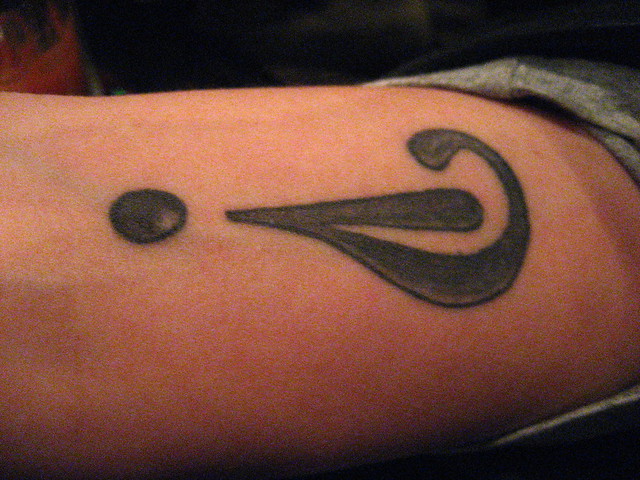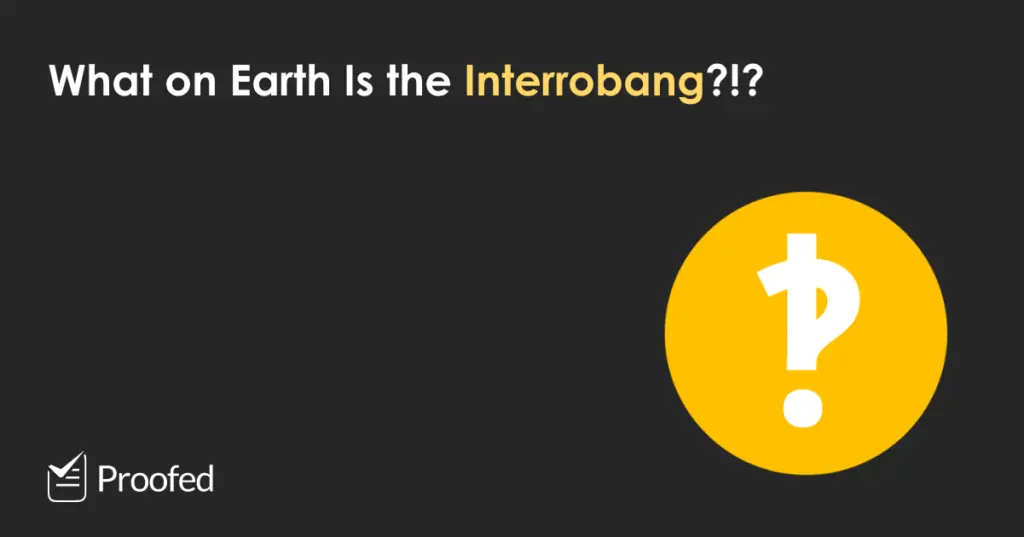Periods? Meh. Commas? Boring. The semicolon? Get with the scene, grandad! We’re hipsters, so we don’t have time for the mainstream. Instead, our favorite punctuation mark is the gloriously obscure interrobang.
But what on earth is an interrobang? And what does it do? Let’s take a look.
Meet the Interrobang
If you want to ask a question and express surprise at the same time, one option is to use a question mark and an exclamation point. For instance:
You spent how much on a pedigree chinchilla?!
Are we really going to Disney World!?
But you could also use an interrobang, which combines both symbols:
You spent how much on a pedigree chinchilla‽
Are we really going to Disney World‽
This combination applies to both the appearance and function of the interrobang. Visually, looks like a question mark mixed with an exclamation point. And functionally, it shows us that someone is inquiring about something, but also that the person asking the question is excited or emotional.
Find this useful?
Subscribe to our newsletter and get writing tips from our editors straight to your inbox.

(Photo: Jeremy Keith/Flickr)
Do I Need to Use Interrobangs?
The short answer is “no.” This is a very rare piece of punctuation. In fact, you can get through life without ever using an interrobang. And even in cases where you could use one, you could write either “!?” or “?!” instead.
Most style guides, meanwhile, ignore the interrobang entirely.
But interrobangs do have their defenders, who argue that one punctuation mark is more elegant than two. This was also the thinking of Martin K. Speckter, who invented the symbol in the 1960s.
Ultimately, though, whether you should use this punctuation mark is largely a matter of preference. You can if you like. But the main reason most people ignore the interrobang is because “!?” or “?!” is usually a simpler option!
Interrobangs in Microsoft Word
Why are “!?” and “?!” usually simpler? Because keyboards don’t feature an interrobang symbol. In fact, you may struggle to find one anywhere in Microsoft Word if you don’t know where to look, as the only font set that allows you to select it via the Symbols menu is Wingdings 2.
The quickest way to type an interrobang in MS Word, then, is usually via Unicode. These are universally recognized codes for common (and, in this case, less common) symbols. The code for the interrobang in Unicode is 203D, so to add this symbol in your document you’ll need to:
- Place the cursor where you want to insert the symbol
- Type 203D (without the quote marks)
- Hold down the ALT key and press X
The “203D” will then magically turn into an interrobang! But to save you doing this every time, you can also set up Microsoft Word so that it autocorrects “!?” or “?!” to create this symbol. To do this:
- Add an interrobang to your document and highlight it with the cursor
- Go to File > Options > Proofing > Autocorrect Options
- Type the symbols you want to correct (e.g., “?!”) in the Replace field
- Click Add to add the autocorrect and OK to confirm

Now, when you type the selected characters, they should instantly correct to an interrobang. However, this is only necessary if you use this symbol a lot.



